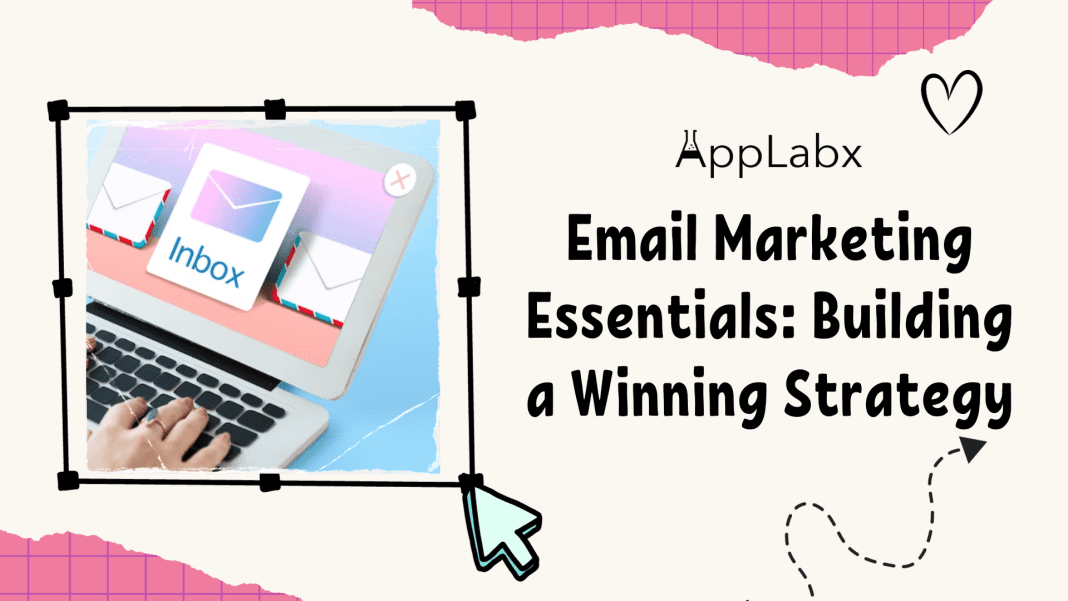Key Takeaways
- Personalization Fuels Engagement: Elevate your email strategy by tailoring content to individual preferences. Explore the power of personalized subject lines, dynamic content, and behavioral triggers for heightened subscriber engagement.
- Data-Driven Decision-Making: Uncover the science behind campaign success with comprehensive analytics. From open rates to advanced testing, harness the insights that drive continual refinement, ensuring your strategy aligns with evolving subscriber expectations.
- Compliance Builds Trust: Navigate the regulatory landscape seamlessly. From CAN-SPAM to GDPR, prioritize compliance to foster transparency, gain trust, and protect your brand reputation.
Building a winning strategy goes hand-in-hand with respecting subscriber privacy and maintaining ethical email practices.
In today’s fast-paced digital landscape, where attention spans are fleeting and consumer preferences constantly evolve, building a winning email marketing strategy has become a paramount endeavour for businesses aiming to establish a robust online presence.
Email marketing, with its unparalleled ability to directly connect with target audiences, remains a cornerstone of effective digital communication.
This blog, “Email Marketing Essentials: Building a Winning Strategy,” is your comprehensive guide to navigating the intricacies of email marketing and crafting a strategy that not only captivates but also converts.
As we delve into the intricacies of email marketing, we embark on a journey that goes beyond the basics.
While understanding the significance of email marketing is a crucial starting point, this blog transcends mere awareness, offering you actionable insights and a step-by-step roadmap to create a formidable email marketing strategy.
Whether you’re a seasoned marketer looking to fine-tune your approach or a budding entrepreneur eager to harness the power of email campaigns, this guide is tailored to meet your needs.

Navigating the Email Marketing Landscape
In an era dominated by social media and various digital channels, the enduring effectiveness of email marketing cannot be overstated.
Our exploration begins with a fundamental understanding of your audience, the linchpin of any successful email marketing campaign.
We unravel the complexities of audience segmentation, demonstrating how identifying target segments and creating customer personas can elevate your campaigns to new heights.
Armed with this knowledge, you’ll be better equipped to tailor your content and messaging, to resonate with your audience on a personal level.
Crafting a Powerful Email List
A winning strategy is built on the foundation of a robust and engaged email list.
We unveil the secrets to ethical and effective list building, exploring innovative techniques to attract subscribers who are genuinely interested in your offerings.
From leveraging lead magnets to implementing irresistible incentives, we guide you through the process of cultivating a community of subscribers eager to receive your emails.
The heart of any email marketing strategy lies in the content it delivers.
In the following sections, we delve into the art of crafting compelling email content that not only grabs attention in crowded inboxes but also fosters meaningful connections with your audience.
From writing attention-grabbing subject lines to creating valuable, shareable content, our insights are designed to transform your emails from mere messages into captivating experiences.
Responsive Design for Maximum Impact
In an era where mobile devices dominate digital interactions, optimizing your email campaigns for mobile responsiveness is no longer an option but a necessity.
We explore the intricacies of responsive email design, sharing best practices to ensure your messages shine on screens of all sizes.
Additionally, we delve into the importance of thorough testing across various devices and platforms, guaranteeing a seamless user experience for every subscriber.
Automation and personalization, the dynamic duo of modern email marketing, take centre stage in the subsequent sections.
We demystify the implementation of personalized campaigns, showcasing how automation tools can streamline your efforts without sacrificing the personal touch.
A/B testing becomes your ally as you optimize your strategies for maximum effectiveness, creating a dynamic and responsive email marketing ecosystem.
Ensuring Deliverability and Analyzing Performance
No matter how stellar your content, it’s futile if your emails don’t land in the inbox.
We guide you through the labyrinth of email deliverability, offering insights into common pitfalls to avoid, tips for building a strong sender reputation, and strategies to monitor and address bounce rates and spam complaints effectively.
As we venture further, we equip you with the tools to measure and analyze your campaign performance.
Setting key performance indicators (KPIs) becomes an art form, and we provide a comprehensive overview of the analytics tools that will empower you to make data-driven decisions.
Your journey to email marketing mastery is incomplete without the ability to continuously refine and optimize based on real-time insights.
Compliant and Ethical Email Marketing
In an era where privacy concerns and regulations are at the forefront, navigating the legal landscape of email marketing is non-negotiable.
We provide a detailed exploration of email marketing laws and regulations, emphasizing the importance of obtaining consent and permission.
Discover how to implement robust unsubscribe options and honour opt-out requests, ensuring your email strategy is not only effective but also ethically sound.
But, before we venture further, we like to share who we are and what we do.
About AppLabx
From developing a solid marketing plan to creating compelling content, optimizing for search engines, leveraging social media, and utilizing paid advertising, AppLabx offers a comprehensive suite of digital marketing services designed to drive growth and profitability for your business.
AppLabx is well known for helping companies and startups use email marketing to drive web traffic to their websites and web apps.
At AppLabx, we understand that no two businesses are alike. That’s why we take a personalized approach to every project, working closely with our clients to understand their unique needs and goals, and developing customized strategies to help them achieve success.
If you need a digital consultation, then send in an inquiry here.
Email Marketing Essentials: Building a Winning Strategy
- Understanding Your Audience
- Building a Solid Email List
- Crafting Compelling Email Content
- Designing Mobile-Friendly Emails
- Personalization and Automation
- Email Deliverability Best Practices
- Measuring and Analyzing Campaign Performance
- Staying Compliant with Email Regulations
1. Understanding Your Audience

Unveiling Audience Segmentation Strategies
In the dynamic realm of email marketing, understanding your audience is the linchpin of success.
Audience segmentation is not merely a buzzword; it’s a strategic imperative.
According to a report, segmented email campaigns have a 14.31% higher open rate than non-segmented ones. Let’s delve into the strategies that empower you to dissect your audience into meaningful segments.
Demographic Segmentation
Definition: Demographic segmentation involves categorizing your audience based on characteristics such as age, gender, income, education, and occupation.
Example: If you’re marketing a product tailored for young professionals, segmenting your audience by age (25-34), income level, and industry can refine your targeting and messaging.
Geographic Segmentation
Definition: Dividing your audience based on their geographical location, which is crucial for tailoring campaigns to regional preferences.
Example: An e-commerce business could customize email content based on the climate of different regions, promoting winter wear to colder areas and summer clothing to warmer locales.

Psychographic Segmentation
Definition: Understanding audience attitudes, values, lifestyle, and personality traits to create targeted campaigns that resonate on a deeper level.
Example: A fitness brand might segment its audience based on its commitment to a healthy lifestyle, tailoring content for dedicated fitness enthusiasts and those seeking beginner-friendly routines.
Behavioural Segmentation
Definition: Analyzing audience behaviour, such as purchase history, website interactions, and engagement levels, to anticipate future actions.
Example: An online bookstore could send targeted emails to customers who frequently browse a specific genre, offering personalized book recommendations.
Harnessing the Power of Customer Personas
Creating detailed customer personas is a strategic cornerstone, enabling you to humanize your audience and tailor your communication to specific archetypes.
Building Comprehensive Customer Personas
Data-Driven Approach: Leverage customer data, surveys, and feedback to create personas that reflect real-world characteristics and preferences.
Example: An e-learning platform may craft personas like “Career-driven Professional” and “Ambitious Student,” tailoring content and promotions to each persona’s unique goals.

Personalizing Email Content for Customer Personas
Tailored Content: Craft emails that speak directly to the pain points, aspirations, and interests of each persona, enhancing engagement and conversion rates.
Example: A beauty brand may create persona-specific content, offering skincare tips to a “Skincare Enthusiast” persona and makeup tutorials to a “Beauty Novice.”
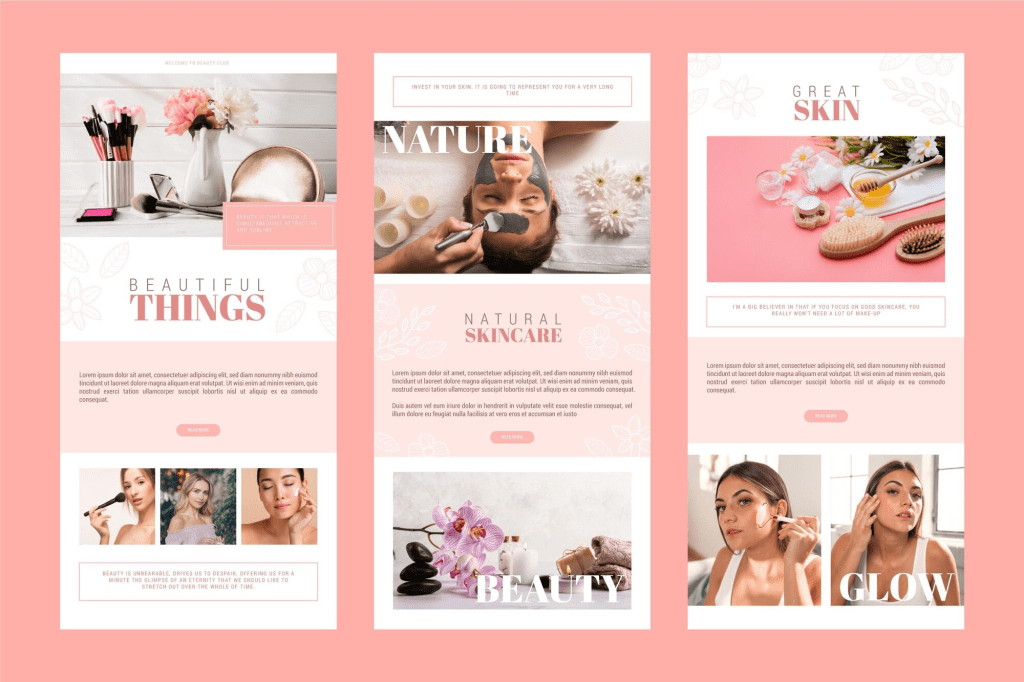
Iterative Refinement of Customer Personas
Continuous Improvement: Regularly update and refine your customer personas based on evolving market trends, feedback, and changes in audience behaviour.
Example: An app developer might adjust personas based on new features, ensuring email campaigns align with the evolving needs of distinct user groups.
Analyzing Customer Behavior and Preferences
In the data-driven landscape of email marketing, understanding how your audience interacts with your content is pivotal.
Utilize analytics tools to gain insights into customer behaviour and preferences.
Utilizing Email Analytics Platforms
Tools: Platforms like Google Analytics, Mailchimp, and HubSpot provide robust analytics features to track open rates, click-through rates, and user engagement.

Example: By analyzing which email campaigns resonate most with your audience, you can tailor future content to replicate successful strategies.
Conducting A/B Testing for Optimal Engagement
Methodology: A/B testing involves sending variations of an email to segments of your audience to identify which version performs better.
Example: Testing different subject lines, CTAs, or visuals allows you to optimize content based on actual audience preferences, leading to higher engagement.
Soliciting and Incorporating Customer Feedback
Interactive Surveys: Engage your audience through surveys, polls, or feedback forms to gather direct insights into their preferences and expectations.
Example: An online retailer might use customer feedback to enhance product recommendations, leading to more personalized and effective email campaigns.
2. Building a Solid Email List

Ethical and Effective List-Building Techniques
Building a solid email list is the cornerstone of any successful email marketing strategy.
However, the emphasis must be on ethical practices to ensure engagement and compliance with regulations.
Implementing Double Opt-In Strategies
Definition: Double opt-in requires subscribers to confirm their email addresses, reducing the likelihood of fake or mistyped entries.
Example: Double opt-in can significantly improve list quality and engagement.
According to a study, double opt-in lists had better open rates, with a 72.2% increase in unique opens and a 75.6% increase in total opens.
Leveraging Social Media for List Growth
Integration: Utilize social media platforms to promote email subscriptions, creating a seamless experience for users to join your list.
Example: A clothing brand might run a Facebook ad with a call-to-action to subscribe to their newsletter, offering exclusive discounts to incentivize sign-ups.
Employing Content Upgrades and Lead Magnets
Strategy: Offer valuable content upgrades or lead magnets such as eBooks, guides, or exclusive content in exchange for email sign-ups.
Example: A marketing blog could provide a comprehensive SEO guide as a lead magnet, attracting professionals interested in improving their digital marketing knowledge.
Importance of Segmentation for Targeted Communication
Segmenting your email list is not only a best practice; it’s a strategic necessity to ensure that your messages resonate with specific audience segments.
Tailoring Content Based on Demographics
Example: If you have data on the age and gender of your subscribers, a beauty brand might send targeted emails featuring skincare products for a younger demographic and anti-aging solutions for an older audience.
Behavioral Segmentation for Personalized Campaigns
Example: An e-commerce site could segment its list based on purchase history, sending tailored recommendations and promotions to frequent buyers or re-engagement campaigns to those who haven’t made a purchase recently.

Utilizing Lead Magnets and Incentives
Incentivizing users to join your email list is a powerful technique, and lead magnets play a crucial role in this process.
Exclusive Discounts and Promotions
Strategy: Offer exclusive discounts or promotions to subscribers, creating a sense of exclusivity and urgency.
Example: An online retailer might provide a 10% discount code for new subscribers, encouraging immediate engagement.
Providing Valuable Content as Lead Magnets
Example: A business consultancy could offer a free whitepaper on industry trends as a lead magnet, attracting professionals interested in staying updated on the latest developments.
Contests and Giveaways
Tactic: Run contests or giveaways, requiring participants to subscribe to your email list for entry.
Example: A travel agency might organize a giveaway for a free weekend getaway, attracting subscribers interested in travel opportunities.
Nurturing Subscribers with Engaging Content
Once subscribers join your list, it’s essential to keep them engaged through consistent and valuable content.
Email Newsletters with Valuable Information
Example: A technology blog could send weekly newsletters featuring the latest industry news, product reviews, and tips, keeping subscribers informed and engaged.
Exclusive Content for Subscribers
Example: A fitness influencer might send exclusive workout videos or nutrition tips to subscribers, providing added value beyond what is available on public platforms.

Surveys for Personalized Content Delivery
Strategy: Periodically send surveys to understand subscriber preferences better and tailor future content accordingly.
Example: An online course provider might send a survey to identify the skill areas subscribers want to develop, guiding the creation of future course offerings.
3. Crafting Compelling Email Content
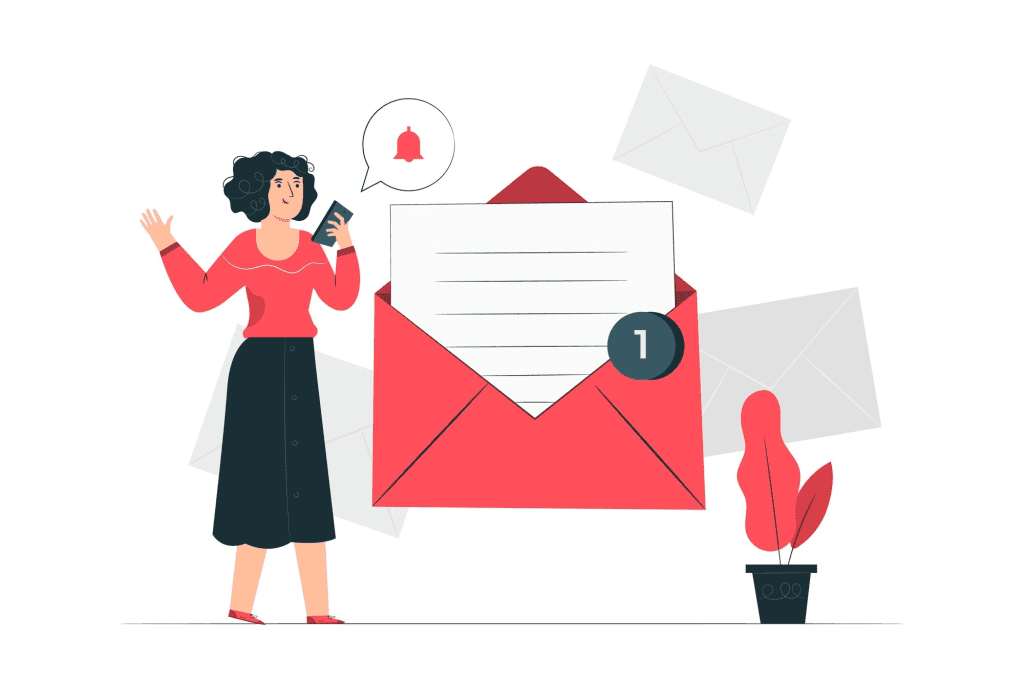
Crafting Irresistible Subject Lines
The journey to compelling email content begins with a captivating subject line.
The Power of Personalization in Subject Lines
- According to a report, emails with personalized subject lines are 26% more likely to be opened.
- Example: Instead of a generic subject line like “Check Out Our Latest Offers,” a personalized alternative could be “Exclusive Deals Just for You: [Subscriber Name].”
Creating a Sense of Urgency
- Subject lines containing a “Sense of Urgency” have a 22% higher open rate.
- Example: “Limited Time Offer: 24 Hours Only to Unlock Special Discounts”
A/B Testing for Subject Line Optimization
- Strategy: Regularly conduct A/B tests with different subject lines to identify the most effective ones for your audience.
- Example: Test variations such as emojis, different lengths, or posing questions to understand what resonates best with your subscribers.
Developing Engaging Email Copy
Once your email is opened, the content must deliver value and maintain the reader’s interest.
Crafting compelling email copy involves a combination of storytelling, clarity, and a focus on the subscriber’s needs.
The Art of Storytelling
Example: Instead of a straightforward product promotion, narrate a customer success story, detailing how your product solved a problem.
Concise and Scannable Content
- Attention Span Insight: The average adult’s attention span is 8.25 seconds.
- Strategy: Craft concise and scannable content, using short paragraphs, bullet points, and compelling headings to keep readers engaged.
Focusing on the Value Proposition
Example: Clearly articulate the benefits of your product or service. For instance, a fitness brand might highlight “Achieve Your Fitness Goals with Our Personalized Training Programs.”
Incorporating Visual Appeal
Visual elements play a crucial role in enhancing the overall appeal and effectiveness of your email content.
Impact of Visuals on Engagement
- Email campaigns with images have a 42% higher CTR than campaigns without images.
- Example: Include high-quality images or infographics showcasing your product or service in action to enhance visual appeal.
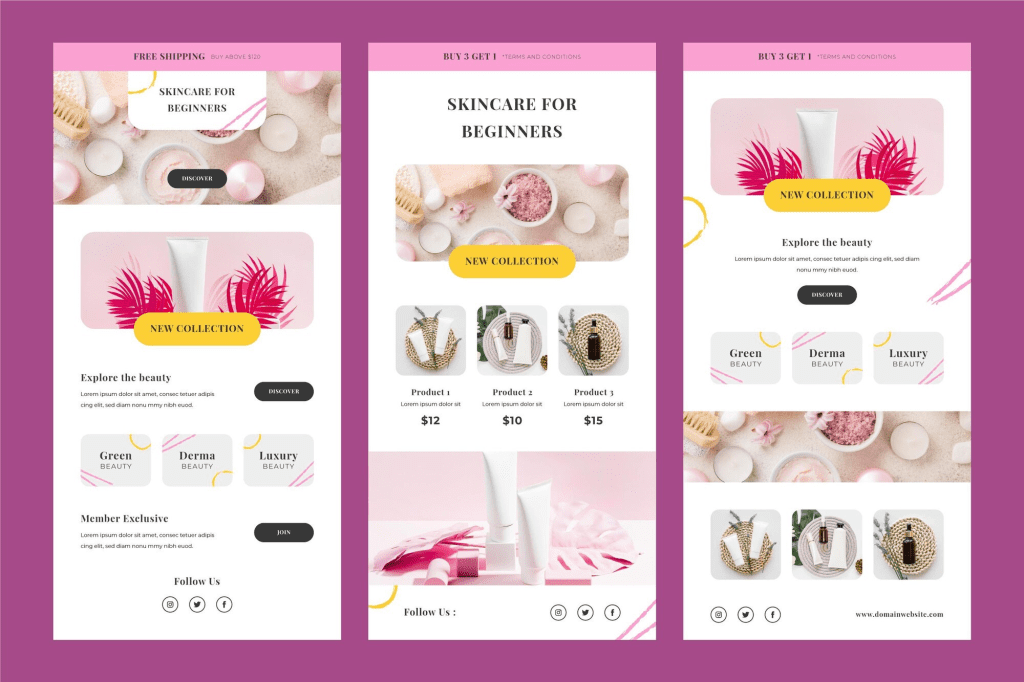
Consistent Branding Through Visuals
- Strategy: Maintain a consistent visual theme aligned with your brand identity to enhance brand recognition.
- Example: Use branded colours, fonts, and imagery that resonate with your overall brand image.
Mobile-Optimized Visuals
- Mobile Usage Insight: Mobile devices opened a whopping 61% of all emails in 2018.
- Strategy: Ensure visuals are optimized for mobile viewing to provide a seamless experience for the majority of your audience.
Call-to-Action (CTA) Optimization
The effectiveness of your email hinges on a clear and compelling call to action. Optimizing the CTA involves strategic placement, persuasive language, and a sense of urgency.
Strategic Placement of CTAs
- Emails with a single call-to-action can increase clicks by over 371% and sales by around 1617%.
- Example: Place the primary CTA prominently, ensuring it’s easily accessible without overwhelming the reader.
Persuasive CTA Language
Example: Instead of a generic “Click Here,” use persuasive language like “Claim Your Free Trial” or “Unlock Exclusive Access.”
Urgency in CTAs
Example: Incorporate urgency into your CTA, such as “Shop Now for Limited-Time Discounts” or “Grab Your Spot – Limited Availability.”
A/B Testing for Continuous Improvement
A/B testing is a pivotal strategy for refining and optimizing your email content over time.
Testing Different Content Formats
Strategy: Experiment with various content formats, such as short vs. long-form content, to determine what resonates best with your audience.
Iterative Testing of Visual Elements
Example: Test different visuals, including images, GIFs, or videos, to identify which format generates higher engagement.
Subject Line and CTA Variations
- A/B testing can increase conversion rates by 49%.
- Strategy: Continuously test variations of subject lines and CTAs to optimize for the highest engagement.
4. Designing Mobile-Friendly Emails

The Significance of Mobile-Friendly Email Design
In an era where mobile devices dominate digital interactions, designing emails that cater to the mobile user experience is not just a best practice; it’s a necessity.
The impact of mobile-friendly design on user engagement and conversion rates is substantial, making it a crucial aspect of any successful email marketing strategy.
Mobile Email Open Rates and User Behavior
User Behavior: Mobile users tend to engage with emails differently, emphasizing the need for responsive and user-friendly designs.
Impact on User Experience and Engagement
- Click-to-open rates are 40% higher for brands that send exclusively responsive emails (14.1%).
- Example: Consider a retail brand sending out a newsletter with mobile-optimized images and clear calls-to-action (CTAs), resulting in a seamless experience for users viewing the email on their smartphones.
Responsive Email Design Best Practices
Creating emails that adapt seamlessly to various screen sizes and resolutions is fundamental to ensuring a positive mobile user experience.
Fluid Grid Layouts and Flexible Images
- Strategy: Utilize fluid grid layouts and flexible images that automatically adjust to different screen sizes.
- Example: An e-commerce email employing a fluid grid ensures that product images and descriptions resize proportionally, maintaining a visually pleasing layout on both desktop and mobile screens.
Simplified and Touch-Friendly CTAs
Example: A travel agency’s email with a single, easily tappable CTA – “Book Your Adventure Now” – ensures a streamlined experience for mobile users, minimizing the need for pinch-zooming or accidental clicks.
Minimalistic Design for Clarity
- Strategy: Embrace a minimalistic design approach to enhance clarity and focus on essential content.
- Example: A restaurant’s promotional email for mobile users might feature a clean layout with high-quality images of new menu items and a prominent “Order Now” button.
Testing Across Devices and Platforms
Ensuring your emails render correctly on various devices and email clients is paramount to reaching a diverse audience.
Utilizing Email Testing Tools
Tools: Employ email testing tools like Litmus or Email on Acid to preview how your emails will appear across different devices and email clients.

Cross-Device Compatibility
Example: A tech company launching a product announcement campaign would use testing tools to confirm that the email displays correctly on iPhones, Android devices, various tablets, and popular email clients like Gmail and Outlook.
Regular Updates Based on Testing Results
Strategy: Continuously update your email templates based on testing results to adapt to changes in device specifications and email client rendering.
Optimizing Content for Mobile Consumption
Beyond design, optimizing the actual content of your emails for mobile users is crucial for maintaining engagement.
Concise and Scannable Content
Example: A financial institution’s email newsletter may include concise snippets about market trends and investment tips, catering to the short attention spans of mobile users.
Font Size and Readability
- Strategy: Use legible font sizes to ensure readability on smaller screens without requiring users to zoom in.
- Example: An educational platform sending out a newsletter would use a font size that facilitates easy reading of course updates and announcements on mobile devices.

Preview Text Optimization
- Informative or optimized preview text can increase the open rate up to 45%.
- Example: A nonprofit organization might use engaging preview text to entice mobile users to open an email about a recent successful campaign, providing a glimpse into the content awaiting them.
5. Personalization and Automation

The Power of Personalization in Email Marketing
Personalization in email marketing goes beyond addressing subscribers by their first name.
It involves tailoring content based on individual preferences, behaviours, and demographics, creating a more intimate and relevant connection.
Enhanced Email Engagement with Personalization
- Personalized emails generate six times higher transaction rates and revenue per email than non-personalized emails.
- Example: An online bookstore could personalize recommendations based on a subscriber’s past purchases, increasing the likelihood of them discovering and purchasing new books.
Dynamic Content Personalization
- Strategy: Utilize dynamic content blocks to show different content to different segments within your email list.
- Example: A clothing retailer may showcase winter wear to subscribers in colder regions while highlighting summer clothing for those in warmer climates.
Personalized Subject Lines for Higher Open Rates
Example: Instead of a generic subject line, “Check Out Our New Collection,” personalize it to “Explore Styles Tailored for You.”
Embracing the Efficiency of Email Automation
Automation streamlines repetitive tasks, allowing marketers to deliver timely and relevant content without constant manual intervention. It enables the creation of personalized customer journeys based on user behaviour.
Behavioral Triggered Emails
- The open rate for trigger emails is 70.5% higher and CTR is 152% higher in comparison to emailed newsletters.
- Example: An e-commerce store could send a triggered email with personalized product recommendations based on a customer’s recent browsing or purchase history.
Drip Email Campaigns for Nurturing Leads
- Strategy: Implement drip campaigns to nurture leads over time, delivering a series of automated emails based on specific actions or time intervals.
- Example: A software company might use a drip campaign to guide trial users through the product features, offering tips and incentives to encourage subscription.

Cart Abandonment Recovery
- Sending an abandoned cart email can result in an average of 29% higher order value compared to regular promotional emails.
- Example: An online retailer could automatically send a personalized email reminding a customer about items left in their cart, along with an exclusive discount to incentivize completion of the purchase.
A/B Testing for Personalization and Automation Optimization
A/B testing is a valuable strategy for optimizing personalization and automation efforts, helping identify the most effective elements for improved engagement.
Testing Personalization Variables
Strategy: A/B tests different personalization variables, such as using the subscriber’s name in the subject line versus not using it, to determine the impact on open rates.
Optimizing Automated Workflows
Example: A travel agency might A/B test variations in the timing and frequency of automated emails within a customer journey to identify the optimal sequence for higher conversion rates.
Iterative Refinement Based on Results
Strategy: Continuously refine personalization and automation strategies based on A/B test results and evolving customer preferences.
Implementing Email Segmentation for Personalized Automation
Segmentation is the backbone of personalized automation, allowing marketers to tailor automated campaigns to specific audience segments.
Segmentation Based on Demographics
Example: A health and wellness brand could segment its audience by age, sending targeted automated emails promoting different products and content for different age groups.
Behavioral Segmentation for Targeted Campaigns
Example: An online learning platform might automate campaigns based on user engagement levels, sending additional resources or discounts to highly engaged users.
Geographic Segmentation for Localized Campaigns
- Strategy: Segmenting by location allows for the delivery of localized content, promotions, and event invitations.
- Example: A global retail brand could automate emails with location-specific promotions, ensuring relevance for subscribers in different regions.
6. Email Deliverability Best Practices
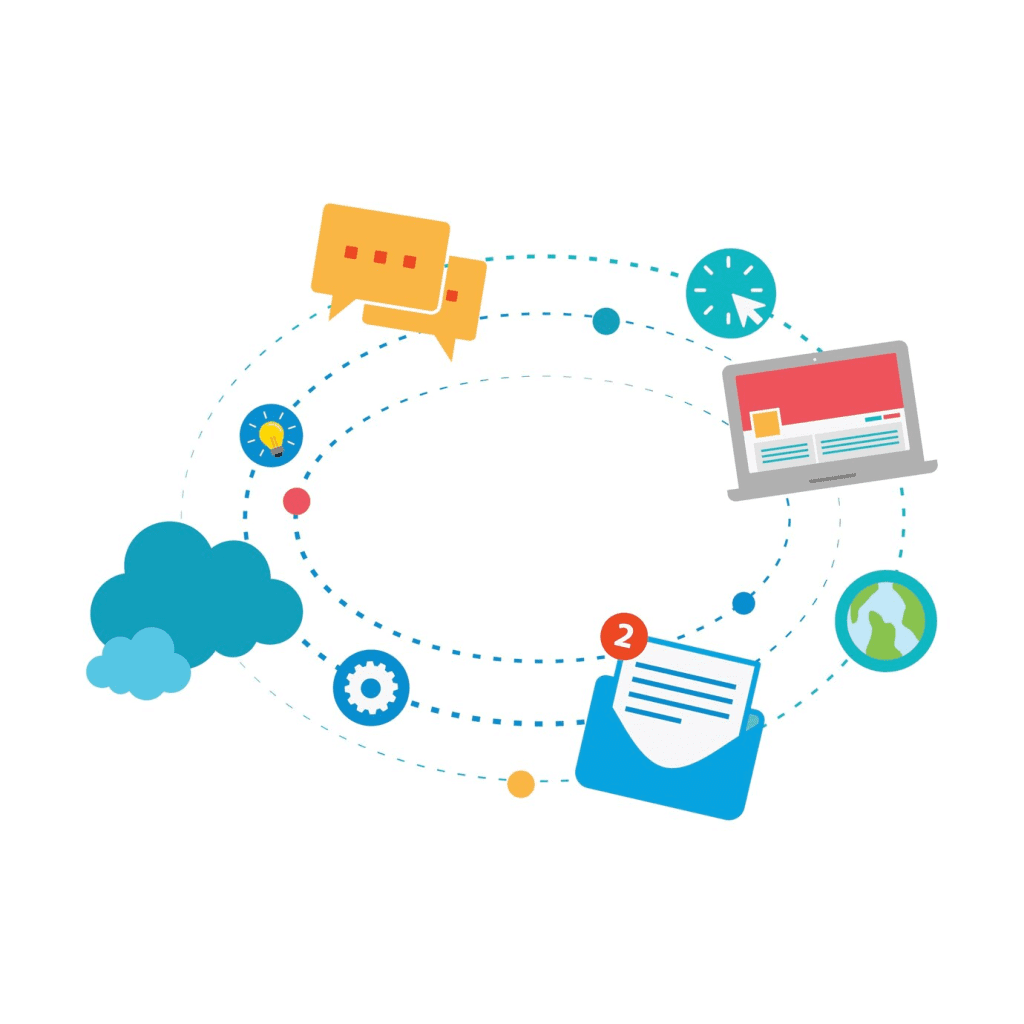
The Crucial Role of Email Deliverability
Ensuring that your emails land in the recipient’s inbox is foundational to the success of any email marketing campaign.
Poor email deliverability can result in missed opportunities, reduced engagement, and damage to your sender’s reputation.
Understanding Email Deliverability Metrics
- The key metrics for email deliverability include bounce rates, spam complaints, and inbox placement rates.
- Example: A high bounce rate could indicate issues with your email list quality, while an increase in spam complaints may signal irrelevant or unsolicited content.
Impact of Sender Reputation on Deliverability
- Sender reputation is a critical factor. 83% of failed email deliveries are a direct result of poor reputation.
- Example: A consistent track record of sending relevant and valuable content can positively influence your sender’s reputation, leading to better deliverability.
Avoiding Common Pitfalls Affecting Deliverability
Several common mistakes can negatively impact email deliverability. Addressing these pitfalls is crucial for maintaining a healthy sender reputation.
Minimizing Hard and Soft Bounces
- Definition: Hard bounces occur when an email is sent to an invalid address, while soft bounces occur due to temporary issues like a full inbox.
- Strategy: Regularly clean your email list to remove invalid addresses, reducing the likelihood of hard bounces.
Honoring Opt-Out Requests Promptly
- Failing to honor unsubscribe requests promptly can result in spam complaints, impacting deliverability.
- Example: A retail brand promptly removes subscribers who opt-out from their email list, ensuring compliance with regulations and maintaining a positive sender reputation.
Avoiding Spam Triggers in Email Content
Example: Words like “free,” “limited time offer,” or excessive use of exclamation marks can trigger spam filters. Craft your content carefully to avoid these triggers.
Building and Maintaining Sender’s Reputation
A strong sender reputation is the cornerstone of successful email deliverability. Implementing best practices can help build and preserve this reputation.
Authentication Protocols: SPF, DKIM, and DMARC
- Definition: Implement Sender Policy Framework (SPF), DomainKeys Identified Mail (DKIM), and Domain-based Message Authentication, Reporting, and Conformance (DMARC) to authenticate your emails.
- Strategy: Authenticating your emails assures ISPs that your messages are legitimate, enhancing your sender reputation.
Consistent Sending Patterns
- Inconsistent sending patterns can trigger spam filters. ISPs favor senders with a consistent volume of quality emails.
- Example: A weekly newsletter schedule, maintaining a steady volume of emails, establishes a predictable sending pattern.
Monitoring Email Engagement Metrics
- High engagement rates, measured through opens and clicks, positively influence sender reputation.
- Example: A software company uses engagement metrics to tailor content, sending relevant updates to engaged subscribers and re-engagement campaigns to those showing less interest.
Handling Bounce Rates and Spam Complaints
Effectively managing bounce rates and minimizing spam complaints are pivotal for maintaining a positive sender reputation.
Regularly Cleaning Email Lists
- Strategy: Remove inactive or non-responsive subscribers to reduce bounce rates and maintain list hygiene.
- Example: An e-commerce platform regularly cleans its list, removing subscribers who haven’t engaged with their emails in the past six months.
Providing Clear Unsubscribe Options
- Emails with a clear and easy-to-find unsubscribe option are less likely to generate spam complaints.
- Example: An educational institution includes a prominent unsubscribe link in its emails, respecting user preferences and minimizing the risk of complaints.
Handling Spam Complaints Effectively
- Strategy: Implement a process to handle spam complaints promptly, investigating the root cause and taking corrective actions.
- Example: A marketing agency promptly investigates spam complaints, addressing issues such as misleading subject lines or overly aggressive marketing tactics.

Email Testing and Monitoring Tools
Leveraging advanced tools for testing and monitoring is essential for proactively addressing deliverability challenges.
Email Deliverability Testing Platforms
Tools: Platforms like GlockApps and Litmus help simulate and analyze email deliverability across various email clients.
Inbox Placement Testing
Example: A global brand uses inbox placement testing to assess how their emails appear across different ISPs and devices, optimizing content for maximum visibility.
Real-time Monitoring of Sender Reputation
Strategy: Utilize tools like Return Path or SenderScore to monitor your sender reputation in real-time, allowing for immediate adjustments based on emerging trends.
7. Measuring and Analyzing Campaign Performance

The Significance of Measuring Campaign Performance
Measuring and analyzing campaign performance is a pivotal aspect of any successful email marketing strategy. It not only provides insights into the effectiveness of your efforts but also serves as a guide for making data-driven decisions to enhance future campaigns.
Key Metrics for Campaign Evaluation
- Important metrics include open rates, click-through rates (CTR), conversion rates, bounce rates, and overall engagement metrics.
- Example: A retail brand may analyze CTR to assess how well subscribers are responding to product offerings in their email campaigns.
The Impact of Campaign Performance on ROI
- The average ROI through email marketing is $36 for every $1 spent.
- Example: A software company evaluates campaign performance to determine the return on investment (ROI), ensuring that marketing dollars are allocated effectively.
Analyzing Open Rates and Click-Through Rates
Open rates and click-through rates are fundamental metrics that offer insights into how well your audience is engaging with your email content.
Calculating and Interpreting Open Rates
- Calculation: Open Rate = (Total Opens / Number of Delivered Emails) * 100.
- In 2021, the average open rate across all industries was 21.3%. In 2022, the overall average open rate dropped again and stood at 16.97%, with a 10.29% CTR.
Evaluating Click-Through Rates (CTR)
- Calculation: CTR = (Total Clicks / Number of Delivered Emails) * 100.
- The average conversion rate across all fourteen industries is 2.6%.
Segmenting Metrics for Deeper Insights
- Strategy: Segment open and click-through rates based on audience demographics or behavior for more granular insights.
- Example: An e-commerce platform may compare CTRs between different customer segments, such as first-time buyers and repeat customers.
Conversion Rates and Revenue Attribution
Analyzing conversion rates provides crucial insights into the effectiveness of your email campaigns in driving desired actions from your subscribers.
Calculating Conversion Rates
- Calculation: Conversion Rate = (Number of Conversions / Number of Clicks) * 100.
- The average conversion rate across all fourteen industries is 2.9%.
Revenue Attribution to Email Marketing
Example: An online subscription service attributes revenue by tracking the number of conversions from email campaigns, helping to quantify the direct impact on sales.
A/B Testing for Conversion Optimization
- Strategy: Conduct A/B tests on elements like email copy, CTAs, or visuals to identify strategies that optimize conversion rates.
- Example: A travel agency might A/B test different email subject lines to determine which one drives more conversions for vacation package bookings.
Evaluating Bounce Rates and List Health
Bounce rates are indicative of the overall health of your email list, and managing them is essential to maintaining deliverability.
Types of Bounces: Hard vs. Soft
- Definition: Hard bounces occur when an email is sent to an invalid address, while soft bounces are temporary issues like a full inbox.
- Example: A retailer addresses hard bounces by regularly cleaning their email list to remove invalid addresses.
Managing Unsubscribe Rates
- The average unsubscribe rate across all industries is around 0.27%.
- Example: An e-learning platform monitors unsubscribe rates, adjusting content and frequency to reduce opt-outs without compromising engagement.
Utilizing Advanced Analytics and Attribution Models
Leveraging advanced analytics and attribution models can provide a deeper understanding of the customer journey and the role of email marketing in driving conversions.
Multi-Touch Attribution Models
- Strategy: Implement models like multi-touch attribution to assess the contribution of email marketing at various stages of the customer journey.
- Example: A financial services company employs multi-touch attribution to understand how different touchpoints, including email campaigns, contribute to customer acquisition.
Customer Lifetime Value (CLV) Analysis
- The probability of selling to an existing customer is 60-70% while the probability of selling to a new prospect is 5-20%.
- Example: An e-commerce brand calculates CLV to evaluate the long-term impact of email marketing in building customer loyalty and repeat business.
Harnessing Email Analytics Platforms
Utilizing robust email analytics platforms is essential for gaining comprehensive insights and streamlining the measurement of campaign performance.
Popular Email Analytics Tools
Tools: Platforms like Google Analytics, Mailchimp, and HubSpot offer powerful features for tracking and analyzing email campaign performance.
Customized Reporting and Dashboards
Example: A technology company creates custom dashboards within its analytics platform to monitor key email marketing KPIs, allowing for quick and efficient performance assessment.
Real-time Monitoring and Alerts
- Strategy: Set up real-time monitoring and alerts to promptly address any anomalies in campaign performance.
- Example: An e-commerce retailer configures alerts for significant drops in engagement metrics, enabling quick investigation and corrective action.
Iterative Improvement Through Feedback Loops
Creating a feedback loop between campaign performance analysis and future strategies is crucial for continuous improvement.
Soliciting Subscriber Feedback
Example: A consumer goods brand sends periodic surveys to its email subscribers, gathering feedback on content preferences and email frequency.
Iterative Refinement Based on Analytics
- Strategy: Regularly review analytics data and adjust strategies based on performance insights, ensuring ongoing optimization.
- Example: A nonprofit organization analyzes email campaign data to refine its storytelling approach, resonating more effectively with its audience.
8. Staying Compliant with Email Regulations

The Regulatory Landscape of Email Marketing
Staying compliant with email regulations is not just a legal requirement but a crucial element in building trust with your audience.
Understanding the regulatory landscape ensures that your email marketing practices align with industry standards, protecting both your brand reputation and the privacy of your subscribers.
Overview of Key Email Regulations
- Regulations: Notable regulations include the CAN-SPAM Act (Controlling the Assault of Non-Solicited Pornography And Marketing), GDPR (General Data Protection Regulation), and CASL (Canadian Anti-Spam Legislation).
- Example: A multinational corporation adheres to both CAN-SPAM and GDPR requirements, ensuring that its email marketing campaigns comply with the legal frameworks in the United States and Europe.
The Impact of Non-Compliance
- Non-compliance with email regulations can lead to severe consequences, including fines and damage to brand reputation.
- Example: A financial institution ensures compliance with email regulations to avoid legal penalties and maintain the trust of its clients.
CAN-SPAM Act Compliance
The CAN-SPAM Act sets the rules for commercial email, giving recipients the right to stop receiving emails from businesses.
Providing Clear Unsubscribe Options
- Regulatory Requirement: Include a clear and easily accessible unsubscribe option in every commercial email.
- Example: An e-commerce retailer places an “Unsubscribe” link at the bottom of each promotional email, allowing subscribers to opt-out effortlessly.
Including Physical Address in Emails
- Regulatory Requirement: Include a valid physical postal address in all commercial emails.
- Example: A software company includes its office address in email footers, meeting the CAN-SPAM Act’s requirement for transparency.
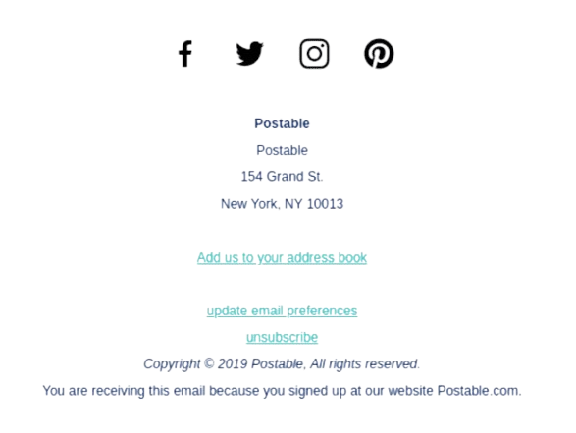
Honoring Opt-Out Requests Promptly
- Regulatory Requirement: Honor opt-out requests within 10 business days.
- Example: A marketing agency processes unsubscribe requests promptly, ensuring compliance with the CAN-SPAM Act’s opt-out timeline.
GDPR Compliance for International Audiences
The General Data Protection Regulation (GDPR) is a comprehensive privacy regulation that applies to businesses handling the personal data of individuals in the European Union.
Obtaining Explicit Consent for Data Processing
- Regulatory Requirement: Obtain clear and unambiguous consent before collecting and processing personal data.
- Example: An online retailer requests explicit consent from users before adding them to the mailing list, adhering to GDPR’s consent standards.
Providing Opt-In Mechanisms
- Regulatory Requirement: Use clear opt-in mechanisms, allowing users to actively choose to receive marketing communications.
- Example: A travel agency includes checkboxes on their sign-up forms, ensuring users actively opt-in to receive newsletters and promotional offers.
Respecting Data Subject Rights
- Regulatory Requirement: Respect individuals’ rights, including the right to access, correct, and delete their personal data.
- Example: An educational platform allows users to access and update their personal information through a user-friendly account dashboard, complying with GDPR rights.
CASL Compliance for Canadian Audiences
The Canadian Anti-Spam Legislation (CASL) regulates commercial electronic messages sent to or from Canada.
Prior Consent for Sending Commercial Emails
- Regulatory Requirement: Obtain prior consent before sending commercial emails.
- Example: A software company ensures that it has explicit consent from Canadian subscribers before sending promotional emails, complying with CASL.
Including Identification Information in Emails
- Regulatory Requirement: Include accurate identification information, such as the sender’s name and contact information, in all commercial messages.
- Example: A nonprofit organization includes clear identification details in their emails, meeting CASL’s requirements for transparency.
Providing Clear Unsubscribe Mechanisms
- Regulatory Requirement: Include a functioning unsubscribe mechanism in all commercial electronic messages.
- Example: An e-commerce platform includes a visible and functional “Unsubscribe” link in its email campaigns, complying with CASL’s opt-out requirements.
Email Marketing Best Practices for Enhanced Compliance
In addition to specific regulations, adhering to email marketing best practices contributes to a culture of compliance and respectful communication.
Permission-Based Marketing
- Strategy: Embrace permission-based marketing, where you only send emails to individuals who have explicitly opted in.
- Example: A hospitality brand builds its email list through opt-in campaigns, ensuring that subscribers have willingly expressed interest in receiving updates.
Regularly Updating Consent
- Strategy: Periodically seek renewed consent from subscribers to ensure ongoing compliance with changing regulations and evolving user preferences.
- Example: An online magazine requests renewed consent from subscribers every two years, aligning with best practices for maintaining explicit permission.
Transparent Privacy Policies
- Strategy: Clearly communicate your privacy policies, detailing how you collect, store, and use subscriber data.
- Example: A technology company provides a link to its comprehensive privacy policy in every email, fostering transparency and compliance with various regulations.
Monitoring and Auditing Compliance
Regularly monitoring and auditing your email marketing practices help identify potential compliance issues before they escalate.
Internal Compliance Audits
Strategy: Conduct regular internal audits to ensure that all email marketing practices align with current regulations and best practices.
Utilizing Email Compliance Tools
Tools: Use compliance tools that monitor and flag potential issues, helping you stay ahead of regulatory changes.
Continuous Education for Marketing Teams
Strategy: Keep marketing teams updated on the latest regulations through continuous education, fostering a culture of compliance.
Conclusion
In the dynamic landscape of digital communication, mastering the art of email marketing is not just a pursuit of clicks and conversions; it’s a journey of building lasting connections with your audience.
As we’ve delved into the essential components of a winning email marketing strategy, from crafting compelling content to ensuring regulatory compliance, it’s evident that success lies in the delicate balance of creativity, data-driven decision-making, and a commitment to meeting the evolving needs of subscribers.
Unveiling the Power of Personalization and Automation
The synergy of personalization and automation emerges as a beacon, guiding marketers to deliver not just emails but tailored experiences.
We’ve explored how personalized subject lines, dynamic content, and behavioral triggers elevate engagement rates and foster a deeper connection with each subscriber.
Automation, the unsung hero, streamlines workflows, nurtures leads, and ensures timely communication, allowing marketers to focus on strategy while technology takes care of the execution.
Navigating the Mobile-Friendly Terrain
In an era dominated by mobile devices, designing mobile-friendly emails is not a checkbox; it’s a strategic imperative.
From fluid grid layouts to touch-friendly CTAs, we’ve seen how optimizing for mobile enhances user experience, drives higher engagement, and caters to the preferences of an on-the-go audience.
Testing across devices and platforms becomes a compass, guiding marketers to ensure that their messages resonate seamlessly across the diverse landscape of screens and email clients.
The Science Behind Deliverability
Email deliverability, often overlooked, emerges as the unsung hero in ensuring that your meticulously crafted messages reach the intended inboxes.
We’ve navigated through the intricacies of sender reputation, bounce rates, and spam complaints, understanding that a healthy deliverability ecosystem is fundamental to the success of any email marketing campaign.
Utilizing advanced tools and continuous testing becomes the armor, protecting your messages from the pitfalls of non-compliance and deliverability challenges.
Decoding Campaign Performance Analytics
In the era of data, the ability to measure and analyze campaign performance is not just an option; it’s a necessity.
We’ve dived deep into open rates, click-through rates, conversion metrics, and advanced analytics, recognizing that these insights are the compass that guides marketers to refine and optimize their strategies continuously.
Harnessing the power of data-driven decision-making, we’ve seen how A/B testing, attribution models, and customer lifetime value analysis pave the way for smarter, more effective campaigns.
Nurturing Compliance for Trust and Transparency
In the complex landscape of regulations, staying compliant is not a mere legal obligation; it’s a commitment to transparency and respect for your audience.
We’ve explored the intricacies of CAN-SPAM, GDPR, and CASL, understanding that the foundation of ethical email marketing lies in obtaining consent, providing clear opt-out mechanisms, and respecting data subject rights.
Best practices and regular compliance audits become the guardians, ensuring that your campaigns not only follow the law but also foster trust among subscribers.
The Continuous Evolution of Email Marketing
As we conclude our exploration of email marketing essentials, it’s imperative to recognize that the landscape is ever-evolving. What works today may need adaptation tomorrow.
The key lies in embracing a mindset of continuous learning, agility, and a genuine understanding of your audience. The marriage of creativity and data, technology and strategy, and compliance and innovation, forms the nucleus of a winning email marketing strategy.
In the vast realm of digital communication, email remains a resilient and potent tool. It’s not just about sending messages; it’s about telling stories, sparking emotions, and nurturing relationships.
A winning email marketing strategy is not a destination; it’s a perpetual journey of refinement, adaptation, and staying attuned to the ever-changing needs and expectations of your subscribers.
So, as you embark on your email marketing odyssey, armed with the insights and strategies explored in this journey, remember that success is not just about building a list; it’s about building connections, one email at a time.
If you are looking for a top-class digital marketer, then book a free consultation slot here.
If you find this article useful, why not share it with your friends and business partners, and also leave a nice comment below?
We, at the AppLabx Research Team, strive to bring the latest and most meaningful data, guides, and statistics to your doorstep.
To get access to top-quality guides, click over to the AppLabx Blog.
People also ask
How do you create a winning email marketing strategy?
Craft a winning email marketing strategy by defining goals, segmenting your audience, personalizing content, and optimizing for mobile. Use compelling subject lines, A/B test, analyze data and nurture customer relationships. Consistency and relevance are key to success.
What is the email marketing strategy?
The email marketing strategy involves planning, creating, and executing campaigns to engage and convert subscribers. Key elements include audience segmentation, personalized content, compelling subject lines, A/B testing, and analytics to refine and optimize campaigns for maximum impact.
Is email marketing still an effective strategy?
Email marketing remains highly effective. It offers direct communication, personalized content, and measurable results. With strategic planning, segmentation, and relevant content, it builds customer relationships, drives engagement, and yields a strong return on investment.


























